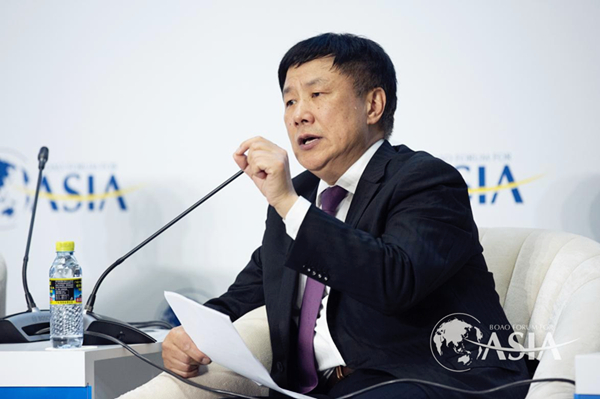
Zhang Yansheng, chief research fellow at the China Center for International Economic Exchanges, speaks at a panel discussion in Boao, Hainan province on March 27, 2019. [Photo provided to chinadaily.com.cn]
"Coordination and integration between cities remain the key words of developing metropolitan areas," said Zhang Yansheng, chief research fellow at the China Center for International Economic Exchanges. Shenzhen, the most innovative region in the Greater Bay Area, may join hands with Hong Kong, which boasts top universities, capital markets and a modern service industry. Zhang suggested Guangzhou, as a city of trade and service, could also coordinate with Foshan, which boasts a high-quality traditional manufacturing industry.
Xu Xianping, professor of the Guanghua School of Management at Peking University, said the government has done a great job integrating infrastructure facilities. "From high-speed rail to railways, we've seen tremendous improvements every year," Xu said, stressing the equalization of public services remains another key component in pushing forward the integration of metropolitan areas.
Li Xunlei, chief economist and head of the Research Institute at Zhongtai Securities, said the free flow of people could break regional barriers and restrictions of administrative mechanisms, adding regional economic development strategies should be adjusted to promote the development of metropolitan areas.
Jia Kang, chief economist at the Chinese Academy of Fiscal Sciences, suggested cities develop their own features to trigger their potential. "For example, Beijing should reinforce its advantages in culture and scientific innovation, while Shanghai should fully use of its economic and shipping advantages," he added.